-
 Bitcoin
Bitcoin $107,341.7259
0.15% -
 Ethereum
Ethereum $2,438.6204
0.70% -
 Tether USDt
Tether USDt $1.0003
-0.02% -
 XRP
XRP $2.1866
1.94% -
 BNB
BNB $649.0952
0.36% -
 Solana
Solana $150.9602
5.63% -
 USDC
USDC $0.9999
0.00% -
 TRON
TRON $0.2742
0.40% -
 Dogecoin
Dogecoin $0.1645
1.93% -
 Cardano
Cardano $0.5669
1.18% -
 Hyperliquid
Hyperliquid $37.8286
4.19% -
 Bitcoin Cash
Bitcoin Cash $491.4669
-2.74% -
 Sui
Sui $2.8150
3.06% -
 Chainlink
Chainlink $13.4184
2.91% -
 UNUS SED LEO
UNUS SED LEO $9.0809
0.27% -
 Avalanche
Avalanche $18.0295
2.60% -
 Stellar
Stellar $0.2396
1.19% -
 Toncoin
Toncoin $2.8587
0.13% -
 Shiba Inu
Shiba Inu $0.0...01160
2.59% -
 Litecoin
Litecoin $86.4192
1.45% -
 Hedera
Hedera $0.1486
1.19% -
 Monero
Monero $308.4324
0.87% -
 Polkadot
Polkadot $3.4202
1.43% -
 Bitget Token
Bitget Token $4.6436
-0.34% -
 Dai
Dai $0.9998
-0.02% -
 Ethena USDe
Ethena USDe $1.0002
0.00% -
 Uniswap
Uniswap $7.1527
3.29% -
 Pi
Pi $0.5357
-8.45% -
 Pepe
Pepe $0.0...09588
4.61% -
 Aave
Aave $259.9759
0.81%
How is the liquidation price of Gate.io's contract calculated?
Gate.io's liquidation mechanism closes positions when margin falls below a threshold, influenced by leverage, contract type, and market volatility. Use tools to estimate liquidation prices.
Apr 02, 2025 at 01:35 am
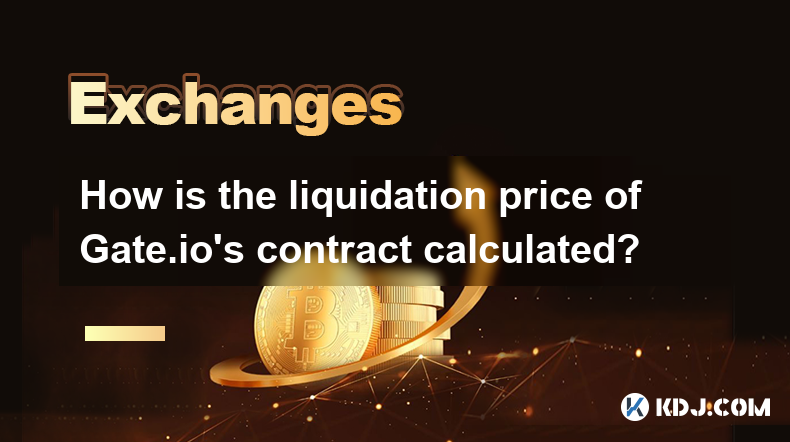
Understanding Gate.io's Liquidation Mechanism
Gate.io, like other cryptocurrency exchanges offering perpetual contracts, employs a liquidation mechanism to mitigate risk and maintain the stability of its trading platform. This mechanism involves automatically closing a trader's position when their margin balance falls below a certain threshold. Understanding how the liquidation price is calculated is crucial for managing risk effectively and avoiding forced liquidations. The exact calculation depends on several factors, primarily focusing on the trader's position size, leverage, and the current market price.
Factors Influencing Liquidation Price Calculation
Several key factors interact to determine the precise liquidation price on Gate.io. These include the type of contract (whether it's a long or short position), the leverage used, the initial margin requirement, and the maintenance margin level. The exchange also incorporates a liquidation fee into the calculation, which adds to the complexity. The interplay of these elements determines the point at which a trader's position becomes vulnerable to liquidation.
The Role of Leverage and Margin
Leverage significantly impacts the liquidation price. Higher leverage magnifies both profits and losses, resulting in a lower liquidation price. This means that with higher leverage, your position is more susceptible to liquidation even with smaller price movements against your position. The initial margin is the amount of funds you initially deposit to open a position, while the maintenance margin is the minimum amount required to keep the position open. When your margin balance falls below the maintenance margin, your position is at risk of liquidation.
A Simplified Example of Liquidation Price Calculation
Let's consider a simplified scenario to illustrate the concept. Suppose a trader opens a long position on Bitcoin with 10x leverage, and the entry price is $30,000. The liquidation price isn't simply determined by a percentage drop from the entry price. Instead, it involves a complex formula factoring in the leverage and the maintenance margin requirement, which varies depending on the specific contract and the exchange's risk parameters. The exchange usually provides tools and calculators to estimate the liquidation price based on your position details.
Step-by-Step Guide (Conceptual): Understanding the Calculation Process
While the exact formula used by Gate.io is proprietary, a simplified conceptual walkthrough can help understand the process.
- Determine the Maintenance Margin: This is a percentage of your position's value, defined by Gate.io for each contract.
- Calculate the Position Value: This is determined by the contract size and the current market price.
- Calculate the Required Margin: Multiply the position value by the maintenance margin percentage.
- Determine the Margin Balance: This is your remaining margin after accounting for unrealized profits or losses.
- Calculate the Liquidation Price: This is the price at which your margin balance equals the required margin. This calculation also incorporates the liquidation fee. The exact formula is proprietary to Gate.io.
The Impact of Market Volatility
Market volatility significantly affects the likelihood of liquidation. During periods of high volatility, even small price movements can quickly deplete a trader's margin, pushing them closer to the liquidation price. Therefore, traders using high leverage should carefully monitor market conditions and adjust their positions accordingly to mitigate the risk of liquidation.
Importance of Risk Management
Effective risk management is paramount when trading perpetual contracts on Gate.io. This includes understanding the liquidation mechanism, using appropriate leverage, and carefully monitoring your margin balance. Traders should avoid over-leveraging, diversify their portfolio, and utilize stop-loss orders to limit potential losses. Using the available tools and resources provided by Gate.io to estimate liquidation prices is essential for informed decision-making.
Understanding the Liquidation Fee
The liquidation fee is a percentage of the position's value charged by Gate.io when a position is liquidated. This fee contributes to the overall cost of liquidation and further reduces the margin available to the trader. It's crucial to factor this fee into your risk assessment and liquidation price calculations. The exact percentage varies depending on the specific contract and may change over time.
Gate.io's Transparency and Resources
Gate.io generally provides tools and resources to help traders estimate their liquidation price. These tools often incorporate the relevant parameters, such as leverage, position size, and maintenance margin. It's highly recommended to utilize these tools to accurately assess your risk exposure and avoid unexpected liquidations. However, remember that these are estimates, and actual liquidation prices may vary slightly due to market conditions and the exchange's internal calculations.
The Role of Order Types in Liquidation
Different order types can influence the liquidation process. For instance, using stop-loss orders can help mitigate the risk of liquidation by automatically closing your position when the price reaches a predetermined level. However, even with stop-loss orders, slippage can still occur during periods of high volatility, potentially leading to liquidation at a less favorable price than intended.
Monitoring Your Position Regularly
Regularly monitoring your open positions and margin balance is crucial to avoid unexpected liquidations. Gate.io typically provides real-time updates on margin levels and liquidation prices. Staying informed about market movements and your position's health is essential for responsible trading.
Frequently Asked Questions
Q: How can I calculate my liquidation price on Gate.io?
A: Gate.io doesn't publicly disclose the exact formula. However, they provide tools within their platform to estimate your liquidation price based on your position's parameters (leverage, contract size, etc.).
Q: What happens if my position is liquidated?
A: Your position is automatically closed by Gate.io, and you'll incur a liquidation fee. Any remaining margin will be returned to your account, but you'll have lost the initial investment plus any additional margin consumed due to losses.
Q: Can I avoid liquidation?
A: Yes, by using lower leverage, carefully monitoring your position, utilizing stop-loss orders, and maintaining a healthy margin balance.
Q: Does the liquidation price change?
A: Yes, the liquidation price is dynamic and changes constantly depending on the market price of the underlying asset and your position's parameters.
Q: Where can I find more information about Gate.io's liquidation policy?
A: Consult Gate.io's official website and help center for detailed information on their liquidation policy and risk management guidelines. Their terms and conditions will also contain relevant information.
Disclaimer:info@kdj.com
The information provided is not trading advice. kdj.com does not assume any responsibility for any investments made based on the information provided in this article. Cryptocurrencies are highly volatile and it is highly recommended that you invest with caution after thorough research!
If you believe that the content used on this website infringes your copyright, please contact us immediately (info@kdj.com) and we will delete it promptly.
- Kitten Craze Online: Hunting for the Purr-fect Coin Purse
- 2025-06-29 10:30:12
- Pudgy Penguins Soar to 3-Month High Amidst PENGU ETF Buzz!
- 2025-06-29 10:30:12
- AI Agents, Token Role, and Capitalization: Navigating the Web3 Frontier
- 2025-06-29 10:50:11
- Avalanche Price Forecast: Grayscale Boost Signals Potential Rally to $50?
- 2025-06-29 10:50:11
- Khazan's Getting a Facelift: Balance Changes and Freebies Galore!
- 2025-06-29 11:10:12
- Wall Street's Crypto Rival Battle: Saylor vs. Chanos and the Meme Coin Mania
- 2025-06-29 11:10:12
Related knowledge
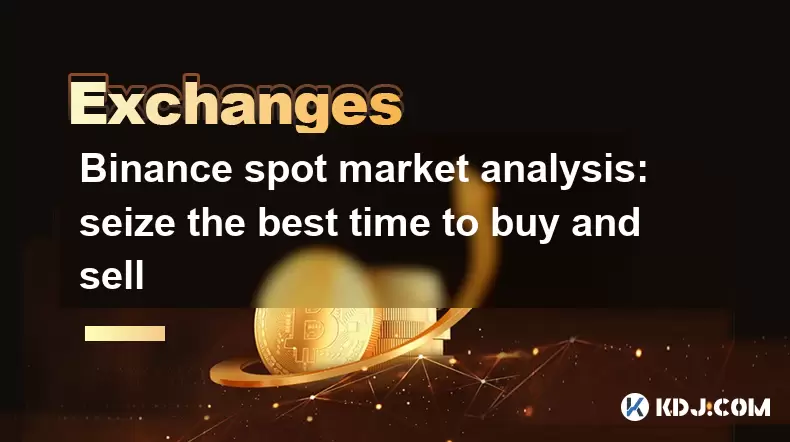
Binance spot market analysis: seize the best time to buy and sell
Jun 19,2025 at 04:56pm
Understanding the Binance Spot MarketThe Binance spot market is one of the most popular platforms for cryptocurrency trading globally. It allows users to trade digital assets at current market prices, making it essential for traders aiming to buy low and sell high. Unlike futures or margin trading, spot trading involves direct ownership of the asset aft...
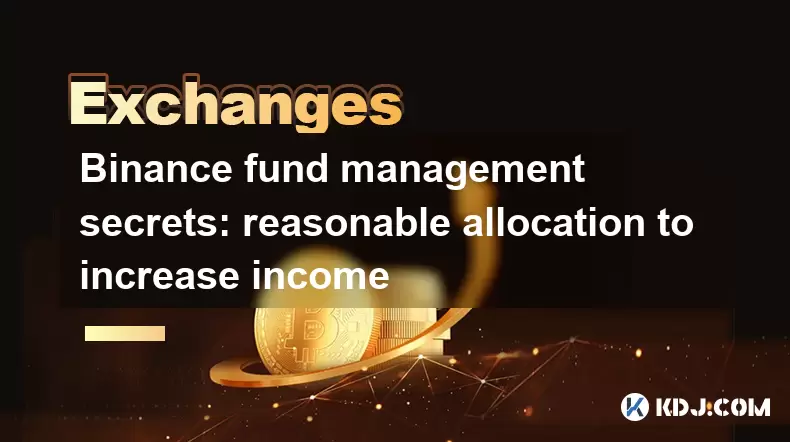
Binance fund management secrets: reasonable allocation to increase income
Jun 22,2025 at 02:29pm
Understanding Binance Fund ManagementBinance fund management involves strategic allocation of your cryptocurrency assets to optimize returns while managing risk. The key to successful fund management lies in understanding how different investment options on the Binance platform can be utilized to create a diversified portfolio. This includes spot tradin...
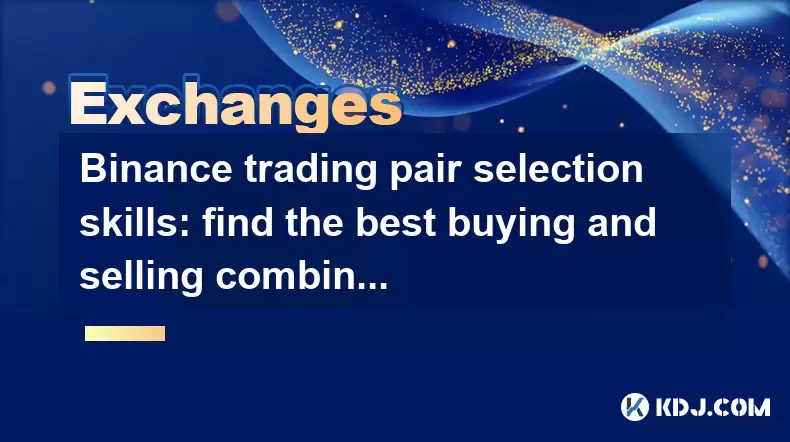
Binance trading pair selection skills: find the best buying and selling combination
Jun 23,2025 at 02:49am
Understanding the Basics of Trading Pairs on BinanceBefore diving into trading pair selection skills, it's essential to understand what a trading pair is. On Binance, a trading pair refers to two cryptocurrencies that can be traded against each other. For example, BTC/USDT means Bitcoin is being traded against Tether. Each trading pair has its own liqui...
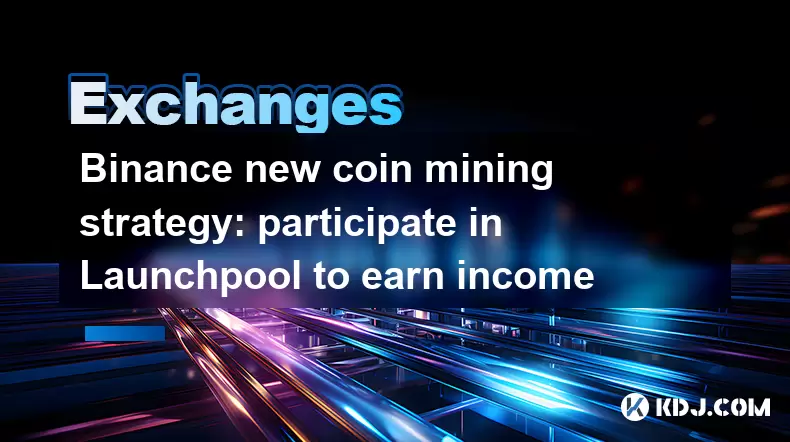
Binance new coin mining strategy: participate in Launchpool to earn income
Jun 23,2025 at 11:56am
What is Binance Launchpool and how does it work?Binance Launchpool is a feature introduced by the world’s largest cryptocurrency exchange, Binance, to allow users to earn new tokens through staking. This platform enables users to stake their existing cryptocurrencies (such as BNB, BUSD, or other supported assets) in exchange for newly launched tokens. T...
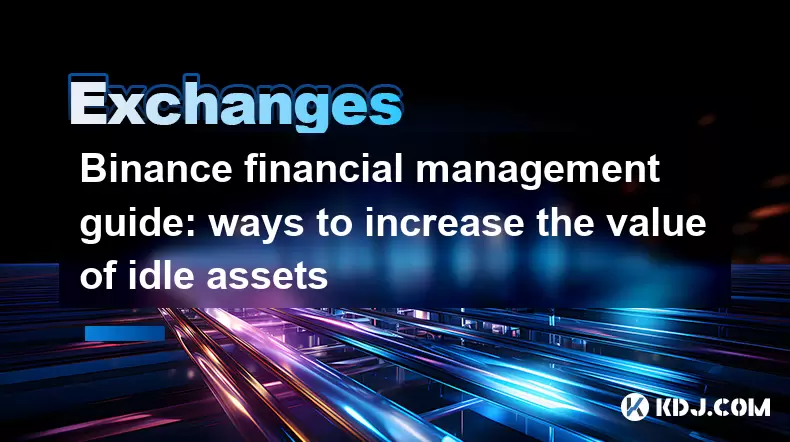
Binance financial management guide: ways to increase the value of idle assets
Jun 19,2025 at 11:22pm
Understanding Idle Assets in the Cryptocurrency SpaceIn the fast-paced world of cryptocurrency, idle assets refer to digital currencies that are not actively being used for trading, staking, or yield farming. Holding these funds in a wallet without utilizing them means missing out on potential growth opportunities. Binance, as one of the leading platfor...
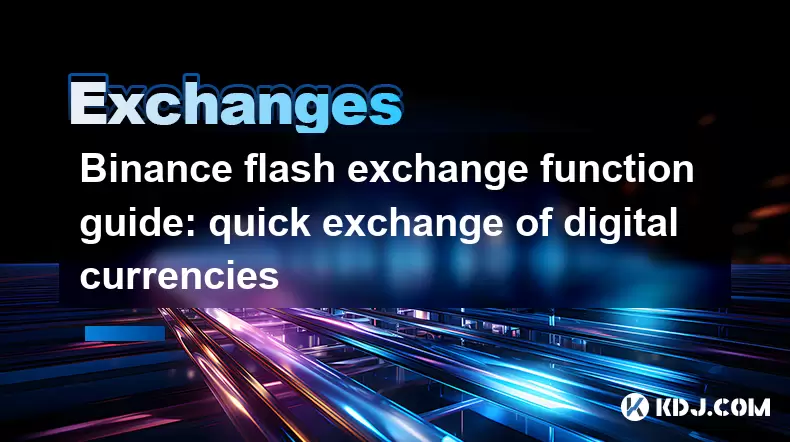
Binance flash exchange function guide: quick exchange of digital currencies
Jun 23,2025 at 12:29pm
What is the Binance Flash Exchange Function?The Binance Flash Exchange function is a powerful tool designed to allow users to instantly swap between supported cryptocurrencies without the need for placing traditional buy/sell orders. This feature simplifies the trading process by offering a direct exchange mechanism, eliminating the requirement to conve...

Binance spot market analysis: seize the best time to buy and sell
Jun 19,2025 at 04:56pm
Understanding the Binance Spot MarketThe Binance spot market is one of the most popular platforms for cryptocurrency trading globally. It allows users to trade digital assets at current market prices, making it essential for traders aiming to buy low and sell high. Unlike futures or margin trading, spot trading involves direct ownership of the asset aft...

Binance fund management secrets: reasonable allocation to increase income
Jun 22,2025 at 02:29pm
Understanding Binance Fund ManagementBinance fund management involves strategic allocation of your cryptocurrency assets to optimize returns while managing risk. The key to successful fund management lies in understanding how different investment options on the Binance platform can be utilized to create a diversified portfolio. This includes spot tradin...

Binance trading pair selection skills: find the best buying and selling combination
Jun 23,2025 at 02:49am
Understanding the Basics of Trading Pairs on BinanceBefore diving into trading pair selection skills, it's essential to understand what a trading pair is. On Binance, a trading pair refers to two cryptocurrencies that can be traded against each other. For example, BTC/USDT means Bitcoin is being traded against Tether. Each trading pair has its own liqui...

Binance new coin mining strategy: participate in Launchpool to earn income
Jun 23,2025 at 11:56am
What is Binance Launchpool and how does it work?Binance Launchpool is a feature introduced by the world’s largest cryptocurrency exchange, Binance, to allow users to earn new tokens through staking. This platform enables users to stake their existing cryptocurrencies (such as BNB, BUSD, or other supported assets) in exchange for newly launched tokens. T...

Binance financial management guide: ways to increase the value of idle assets
Jun 19,2025 at 11:22pm
Understanding Idle Assets in the Cryptocurrency SpaceIn the fast-paced world of cryptocurrency, idle assets refer to digital currencies that are not actively being used for trading, staking, or yield farming. Holding these funds in a wallet without utilizing them means missing out on potential growth opportunities. Binance, as one of the leading platfor...

Binance flash exchange function guide: quick exchange of digital currencies
Jun 23,2025 at 12:29pm
What is the Binance Flash Exchange Function?The Binance Flash Exchange function is a powerful tool designed to allow users to instantly swap between supported cryptocurrencies without the need for placing traditional buy/sell orders. This feature simplifies the trading process by offering a direct exchange mechanism, eliminating the requirement to conve...
See all articles

























































































